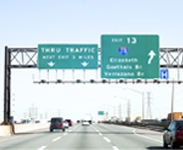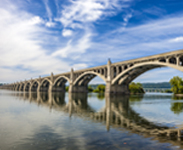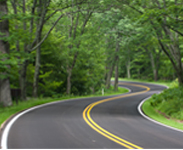Tips For Buying A Used Motorcycle
Get Your License
You can’t ride without a motorcycle endorsement or license. Take the permit test at your local DMV/MVC. We always recommend taking a motorcycle safety class to get your license, but you can also obtain it through the DMV/MVC road test. To test ride any motorcycle you will have to present a motorcycle endorsement or license. Get some riding experience; it will help you determine what kind of motorcycle you want to purchase.
Deciding What You Want
As a new rider, deciding what motorcycle to purchase is probably one of the hardest decisions. A motorcycle can be intimidating. Some key factors to think about are weight, engine size, riding position and price. For a person of a smaller stature, a large bike should not be considered as a first motorcycle. The weight will be too hard to handle and may cause serious harm while riding.
Great beginner motorcycles are between the 250cc and 500cc class range. These types of motorcycles are light enough to handle, but have enough power to ride on the highway. It is important to find a motorcycle with comfortable seat height. When sitting on the motorcycle, the rider should not be on his or her tippy toes. Sport bike and cruiser styles can be found in this engine size category. For a standard riding position with relative comfort, a cruiser style should be chosen. For a more aggressive riding position and harder lean angles, a sport bike style should be chosen.
The more confident you are in your riding abilities will really dictate why type of motorcycle you would want to ride. The different categories of motorcycles are cruiser, sport bike, dual-sport, enduro, scooter, trikes and customs. What you want to ride is really up to you. Get an idea of what you like and research it. Check out reviews and ride reports. The internet is a great resource for information. You can find market values on auction and classified ad sites. The NADA book is a good resource for what a used motorcycle can be worth.
Selecting the Bike
Everyone always wants the good deal. Those deals can be had by scanning the internet and print sources. There are many motorcycles on the market; you just have to find the one for you. After you decide what type of motorcycle you want, you must check your options. There are free and paid internet sites for buying and selling motorcycles. Most of these sites use distance from your zip code to locate local sales. Distance does not always deter all sales and some are willing to travel many miles for a good deal. It depends on how far you really want to drive. Look for low mileage, good cosmetic condition and good mechanical condition in your prospective buy.
Contact the Seller
Friendly correspondence always yields the best results. Contact the seller of the motorcycle and decide on a meeting spot. Use their preferred method of contact whether it is e-mail or telephone. Use a friendly tone and ask questions about the motorcycle. This is not a good time to negotiate price. Negotiating should be done after seeing the motorcycle. Some sellers will be wary to meet at their home so suggesting a public place may make them feel comfortable.
Observe and Take a Test Ride
Once a seller has agreed to let you look at the motorcycle, it is time to take a look. Look at the motorcycle carefully or have a person with more mechanical knowledge help you. Examine the paint, chrome, and exterior finishes. The quality of the exterior of the motorcycle tells a story of how well the owner maintained it. Check for mechanical defects. Check the brakes, cables and tire condition. Check the mileage. Look for leaks and, if any, what type of fluid is leaking. Check out every detail. If things are broken, torn or just look wrong, take note of it. This also a good time to ask for service records if the seller can provide them.

Ask the seller to start the bike and listen for any defects. Engine rattles and knocks can lead to big problems in the future. Make sure it warms up to normal operating temperature. If the seller agrees to let you go for a test ride, take the motorcycle for a small ride to see how it operates. Bring the vehicle up to higher speeds and shift through all of the gears. They should shift smoothly. The engine should run smoothly and have good power. Make sure the suspension is right and handles bumps smoothly. Any problems in these categories can lead to costly repairs down the line.
Make an Offer
Most sellers will negotiate on the price. If you are happy with the test ride, make the seller a reasonable offer. Try to work out a deal if things need to be replaced / fixed. Once you have come to an agreement on price, make sure to have the proper paperwork. Have the seller sign and date the title as “Seller”. Observe the terms of the sale clearly and put it all in writing. Obtain a receipt/agreement for both you and the seller to sign and date. Each of you should retain a copy of this document. Payment should be made with cash, certified check or money order to guarantee funds. A private seller will not have financing options, but a used motorcycle dealer should. If financing options are available, make sure to research them for the best possible rate.
Transportation
If buying from a private seller, you can ask that seller to drive the motorcycle to your home. The license plates can then be removed and you will have sole possession of the motorcycle. You can also have the motorcycle transported from the seller via a towing company. A flatbed or box transport can pick up the motorcycle and deliver it to your home location.
Obtain Insurance
Before you purchase a motorcycle, you should research insurance rates. Like buying a bike, you have a number of options when selecting insurance coverage options. If you plan to ride the motorcycle off of the lot, the dealership will want proof of insurance to make sure you meet state regulation. Liability limit requirements vary by state, but you may want to select higher limits for additional protection. If you are financing the motorcycle, the finance company will typically require comprehensive and collision coverage to protect their investment. Getting a quote is easy; just click here or call us at 1(833)707-4337.
You will also need insurance in order to register your motorcycle. Remember to keep registration and insurance documents on you at all times while riding.
Storage and Gear
Keep your motorcycle secure in a garage or locked near your home. Protect the motorcycle with a cover and locking security system. Wheel locks, rotor locks and chains all work well for securing your motorcycle. GPS tracking devices can be installed on the motorcycle to prevent theft.
When riding your new motorcycle make sure to use DOT approved gear such as a helmet and protective jacket. Remember to always ride with some sort of protective eyewear and hearing protection. Ride comfortably and ride safe.
Plymouth Rock Assurance is a marketing name used by a group of separate companies that write and manage property and casualty insurance in multiple states. Motorcycle insurance in New Jersey and Pennsylvania is underwritten by Rider Insurance Company. Each company is financially responsible only for its own insurance products. Actual coverage is subject to the language of the policies as issued by each separate company.





